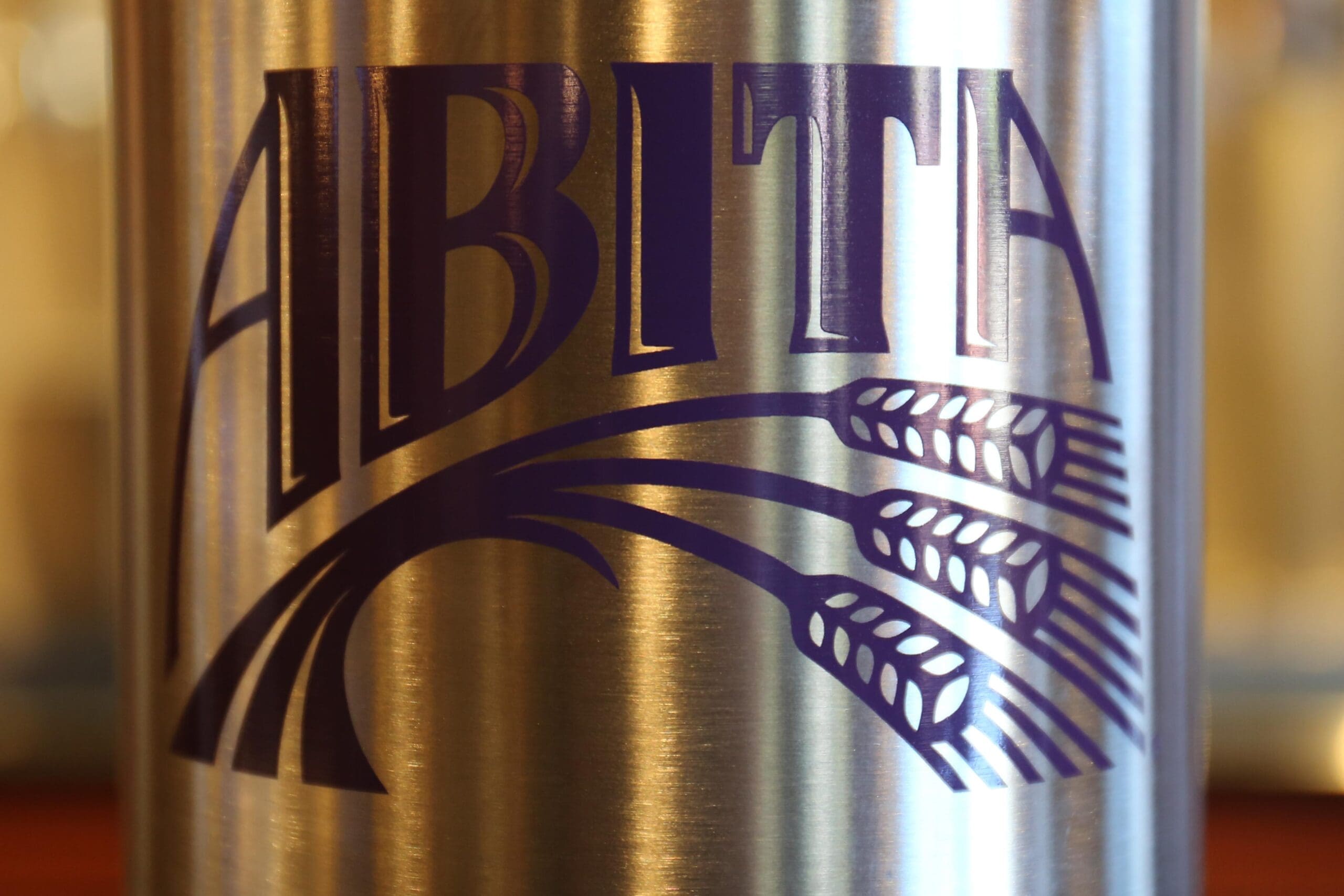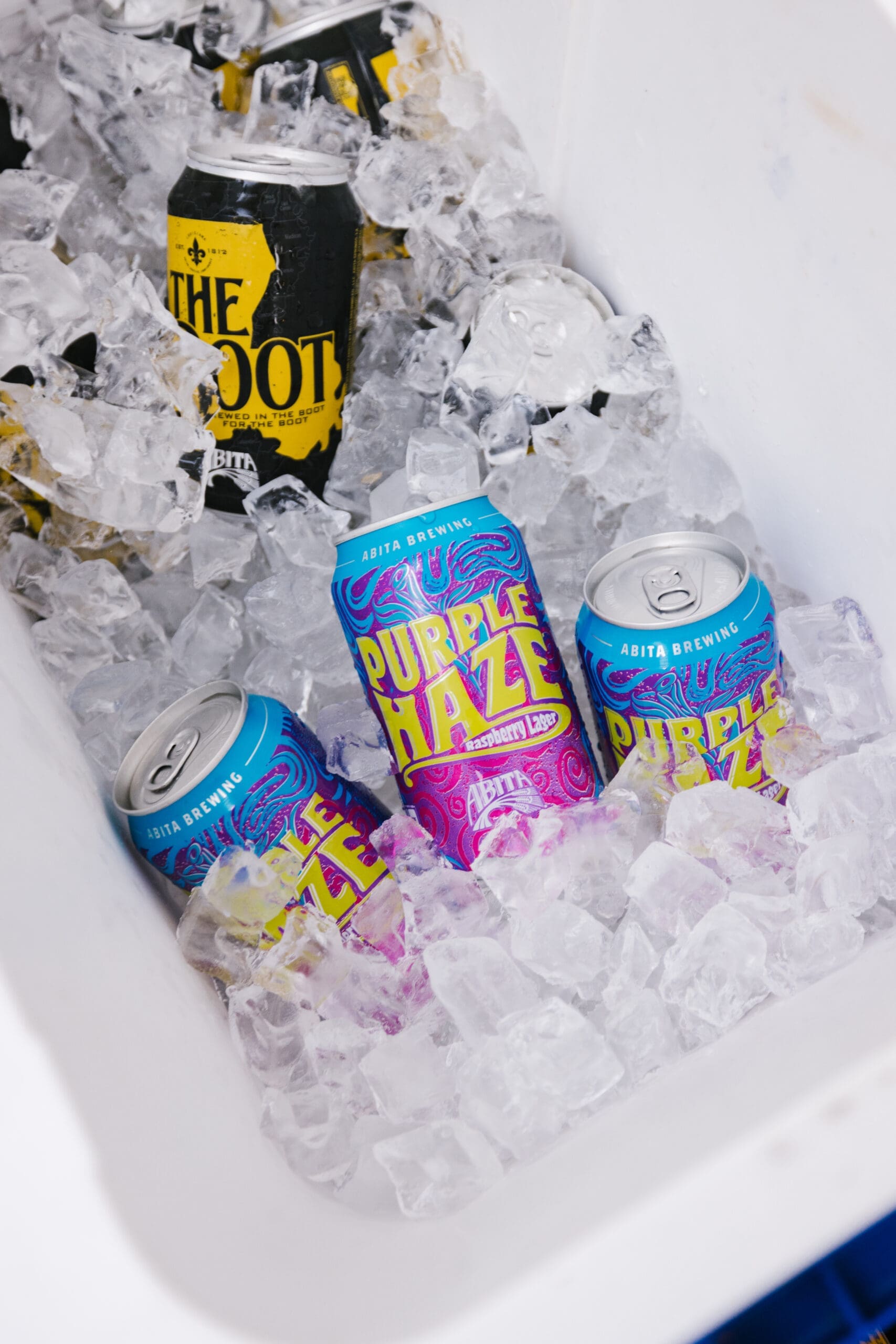The Mash
HERE’S WHERE WE GET DOWN TO BUSINESS. The malted barley is milled to expose the starches and now we call it grist. The grist is mixed with warm water in a huge stainless steel vessel called the mash tun and the mixture is called the mash.
Have you noticed that everything has a special name in brewing? Much of it comes from Old English words. Here’s one you can use if you’re ever a contestant on the game show Jeopardy – a “tun” is an old-fashioned British measurement of liquid volume, roughly 252 gallons.
As the temperature rises in the mash tun, the enzymes in the grist convert the starches to sugars. The difference in mash temperature makes either simple sugars that are fully fermented into alcohol and CO2 by yeast or complex sugars that are not fully fermented and give body and sweetness to the beer. This process takes about two hours and results in a sweet concoction that is then transferred to a different “tun” with a special name.
The Wort
THE MASH IS NOW TRANSFERRED TO THE LAUTER TUN.
The main feature of the lauter tun is the perforated false bottom on the tank – sort of like a strainer or colander. The sweet liquid is called the first wort and it is drained from the mash and collected.
After the first wort is drained away, the bed of grain at the bottom of the lauter tun is sprayed with hot water. This process is called the sparge. The sparge extracts the remaining sugars and flavors from the mash. This second wort is combined and transferred into a brew kettle for boiling.
The Boil
WHEN YOU BOIL WATER ON THE STOVE AT HOME… heat is applied to the bottom of the pot and the entire contents of the pot must be gradually heated until it reaches boiling temperature. The more liquid in the pot, the longer it takes to boil.
The Abita Brewing Company was the first brewery outside Europe to use a revolutionary new boiling system called the Merlin. It reduces the boiling time from 90 minutes to 35 minutes and is 70% more energy efficient. It works by moving the wort over a heated cone inside the Merlin, quickly bringing it up to the proper temperature. Have you ever seen one of those cold drink dispensers where the lemonade or fruit punch is circulated like a fountain over a cone inside a clear glass container? The chilled cone in the drink dispenser is cooling the drink and making a pretty display. Inside the Merlin, the heated cone is boosting the temperature of the wort and speeding up the brewing process.
Hops are introduced into the wort at three different stages in the boiling process. Bittering hops are added first to offset the natural sweetness of the wort. During the boiling process flavoring hops are added to give a well-rounded hop flavor and aroma. At the end of the boil even more hops are added for additional aromas in the finished beer.
The brewmaster can test the aroma potential of different hops by brewing up some “hop tea.” The hops are steeped in hot water and the different aromas are evaluated. The brewmaster uses a very sensitive instrument for this process called “his nose.” No mechanical device can replace a first-class human nose.
Once the boiling process is completed the wort is run through a whirlpool to separate the solids from the liquids. Proteins and hops are spun out and clear wort remains.
The wort is still very hot and needs to be cooled before the yeast is added. Pipes full of ice cold water in the heat exchanger drop the temperature of the wort to anywhere from 50 to 70 degrees depending on the type of beer being made.
Fermentation
YEAST IS NOW ADDED TO THE WORT… and the liquid is moved to a large, stainless steel fermentation vessel. At this stage we call the product…beer.
The yeast goes right to work eating the malt sugar and creating alcohol and carbon dioxide. If you were to look down into the fermentation tank you would actually see the beer bubbling. The process takes anywhere from four to 14 days. During this time the CO2 is allowed to escape from the tank, but the alcohol remains. When 85% of the sugars have been eaten up by the yeast the fermentation vessel is closed to capture the remaining carbon dioxide and give the beer natural carbonation.
The type of yeast used during fermentation determines whether a beer is an ale or a lager. We select different strains of yeast from the thousands available for each recipe we develop. We’re getting closer, but we still have to wait a little longer.
Aging
THE NEXT STEP IN THE BREWING PROCESS IS AGING. The beer ages in the cold, dark, stainless steel tanks for a minimum of 14 days up to three months. Abita Amber is aged for a minimum of 14 days. Abita Light is aged for a minimum of 21 days and Andygator® ages for 45 days. During the aging process the yeast settles and separates from the beer. When primary aging is complete the yeast is then drained from the tank and is used again to brew more beer.
Some beers are transferred into a secondary aging tank where more hops are added – this process is called dry hopping and it gives the brew a different hop flavor and aroma.
At the end of the aging period the beer is filtered. Abita uses a two-part filtration process. First, we centrifuge filter the beer, spinning out 95% of the remaining yeast and microproteins. We filter the beer again through a plate and frame sheet filter to finish the job and clarify the beer. Now, the moment we’ve been waiting for – the beer is ready to drink, so let’s get it to packaging.
Bottling And Canning
THE BEER IS TRANSFERRED TO A “BRIGHT” BEER TANK AND IS BOTTLED, CANNED OR KEGGED. On our state-of-the-art bottling line the bottles and cans are cleaned, purged of air, pressure filled, sealed, labeled and grouped into packs. Every bottle and can is dated for freshness.
Our cans are coated with a special water-based lining to protect and preserve the great taste of the beer. This lining insulates the beer from the can’s interior surface. Canning also limits exposure to UV light and oxygen, two elements that can damage the taste of beer.
The bottles, cans and kegs are cold stored for no more than seven days before they are shipped in our climate-controlled trucks to our distributors.
Delivery
TO ENSURE QUALITY AND FRESHNESS… we deliver our beers in company-owned and refrigerated trucks. It’s just another step we make to ensure you always receive a quality brew.


